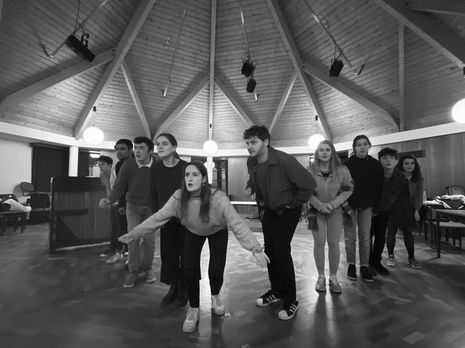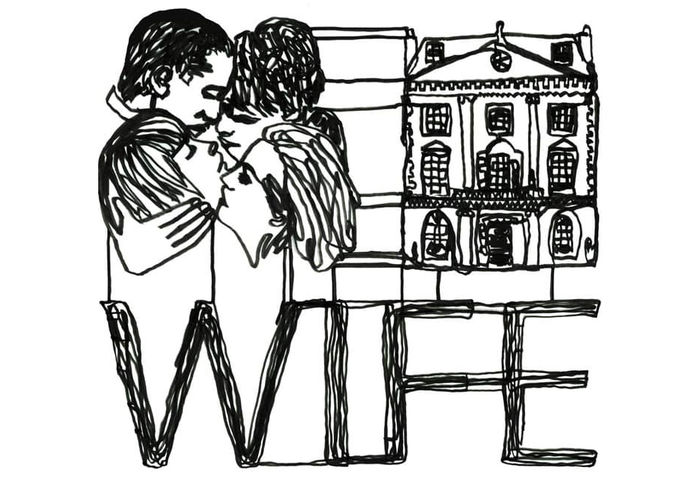Wit and wonder in My Fair Lady
Iulia Marin finds this new reimagining of a classic musical absolutely loverly!

This week, startling transformations are taking place within the ADC: watch how, in just under three hours, a Cockney flower, Eliza Doolittle, turns into an upper-class, Victorian lady with the help of Henry Higgins, as the audience gains pleasure from a dynamic performance which is a veritable feast of visual and musical delights.
Emma Howlett’s vision brings plenty of wit to the production, as she retains and indeed heightens Higgins’s arrogance, while simultaneously imbuing him with a warmth lacking in Shaw’s original play. Howlett also utilises the orchestra in unusual ways. Although they sit hidden under drapes for the majority of the performance, at points they interact with the characters themselves – Brecht would be proud. Unveiling the orchestra during the Embassy Ball gave the impression of an enlargement of the stage which was incredibly welcome in a moment where the presence of the orchestra also fitted in the action itself, not only as an accompaniment.
“My Fair Lady is a stone’s throw away from being a perfect show.”
The outstanding performances of well-known songs such as Wouldn’t It Be Loverly? or With A Little Bit of Luck were enhanced by dances, ensemble multi-rolling and even puppetry (the choir danced with coats or feather dusters). Higgins’s role was definitely challenging, as he had to oscillate between appearing as a mannered upper-class gentleman and a choleric, disrespectful man, a heart-broken presence and a buffoon-like character.

Ella Fitt’s lit the stage in a way that mimicked Eliza’s phonetic and intellectual “enlightenment,” to the appreciation and wonder of the audience. Zak Karimjee’s stage design was in tune with the context in which the original play was written, although it seemed that his decision to cover the walls and floor of the stage with artificial grass did not fit well with the action or plot of the musical. However, the idea may have been perceived as suggesting an intermingling between Higgins’s intellectual background and the less advantaged world of a flower girl. Katie-Alice Constant’s costume design was on-theme and her choice of dull coloured dungarees seemed to be appropriate for the lower-class characters, although it is worth pointing out that Eliza’s clothes, after she gets to be an “educated” lady, could have contrasted more with her initial costume to emphasise her transformation more explicitly.
My Fair Lady is a stone’s throw away from being a perfect show, and certainly stands out from the usual offerings that make up the Cambridge theatrical milieu. If you are up for a witty musical about the position of woman and the importance of class, appearance and essence, love and relationships, head for the ADC Theatre and you will not be disappointed!
 News / Uni Scout and Guide Club affirms trans inclusion 12 December 2025
News / Uni Scout and Guide Club affirms trans inclusion 12 December 2025 News / Pembroke to convert listed office building into accom9 December 2025
News / Pembroke to convert listed office building into accom9 December 2025 Features / Searching for community in queer Cambridge10 December 2025
Features / Searching for community in queer Cambridge10 December 2025 News / Uni redundancy consultation ‘falls short of legal duties’, unions say6 December 2025
News / Uni redundancy consultation ‘falls short of legal duties’, unions say6 December 2025 News / Gov declares £31m bus investment for Cambridge8 December 2025
News / Gov declares £31m bus investment for Cambridge8 December 2025









